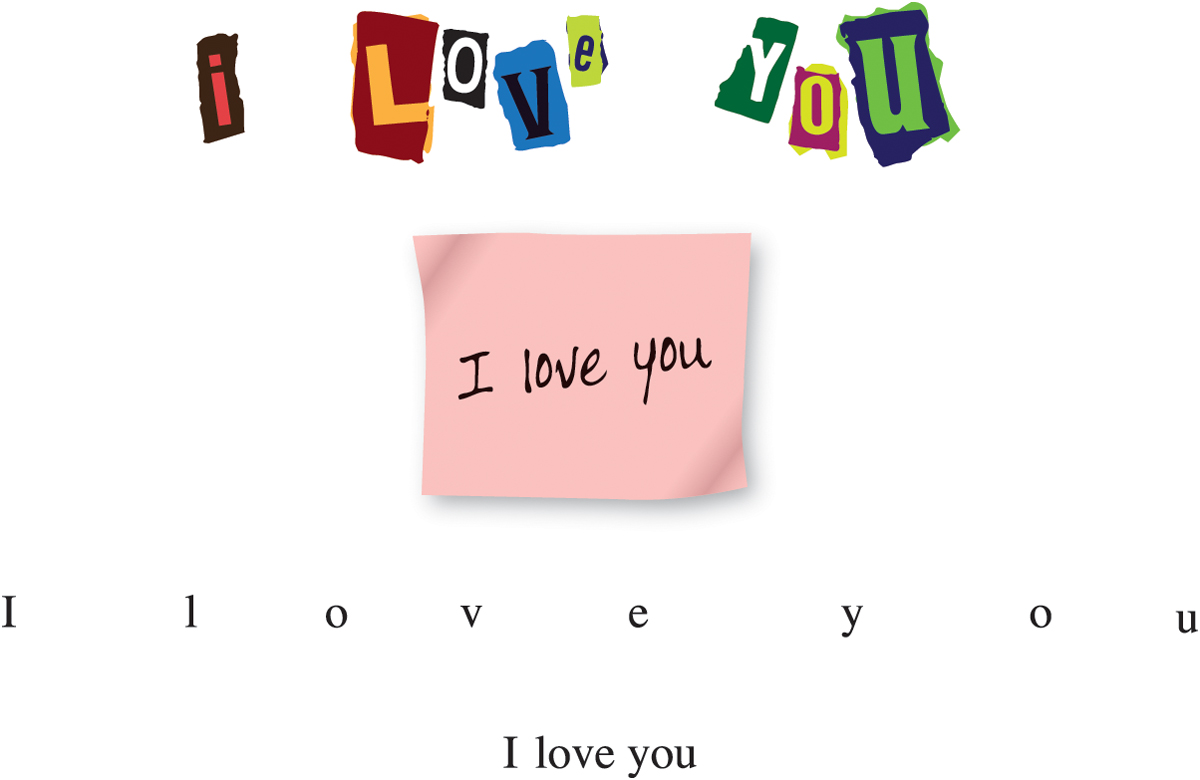The Impact of Design
We can probably all agree that effectively written documents are easy to navigate, and their meanings are accessible to the intended audience. Good design also makes readability easier and the intended meaning clearer and more vivid.
The ways in which design affects the way we read documents can be illustrated fairly simply. Consider this familiar phrase, rendered in four different ways:

The words in each rendering are the same, but the different uses of fonts, colors, and white space encourage us to read them very differently. The first message is vaguely unsettling (is that a ransom note? a message from a stalker?); the second seems conventionally sweet; the third carries no emotional or context clues, but the spacing makes it irritatingly difficult to read; and the fourth offers no tone or context clues at all (though this in itself might strike us as odd, given the meaning of the words). Thus, design does far more than add visual interest: It actually directs how we read and, to a certain extent, determines the meaning we derive.
The freedom you have in terms of using design elements and visuals in the college projects you compose will vary quite a bit, depending on your instructors’ preferences and the nature of the projects. As you write, however, you should always remain aware of the impact design can have on your reader. And any time you read a document — whether it is a textbook, a blog, or even an ad on the side of a bus — you should stop to think about how that document was designed and how that design affects your reading of it.